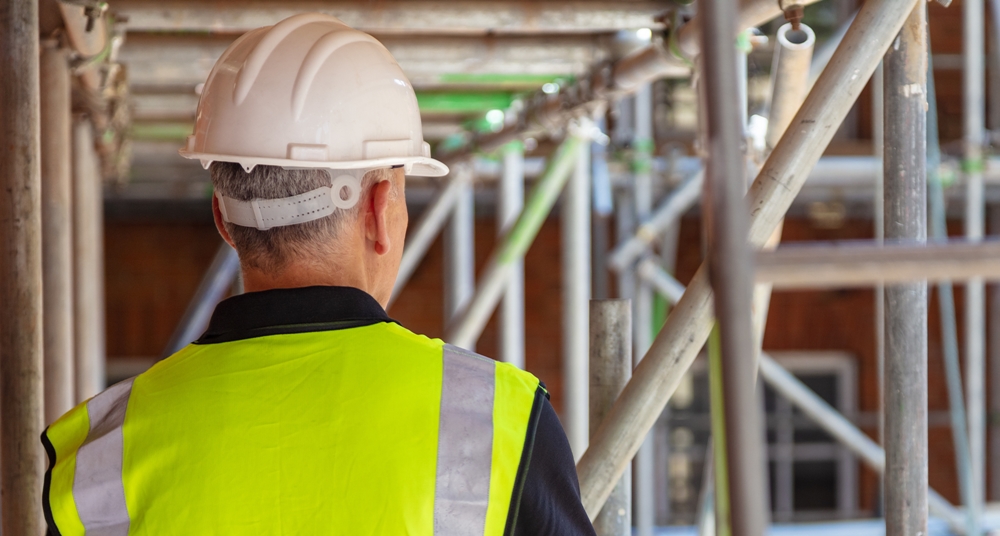
The IoT can revolutionize construction site safety. The same technology that enables you to connect all of your home appliances is showing promise in the realm of construction. Over the last few years, studies have demonstrated how IoT sensors can help monitor risk around scaffolding. More than 4,000 workers get injured in scaffolding accidents every year. While construction today is far safer than it used to be, it can still get safer. IoT sensors in scaffolding systems could provide the answer.
1. Displacement Monitoring
Following the many state and federal regulations prevents a substantial number of accidents, but they can't account for everything. Environmental hazards like strong winds or earthquakes can endanger even the most experienced and thoughtful workers. But IoT-monitored systems can measure these risks.
If a scaffold is moving enough for the movement to be visible, it might be too late to do anything about it. Displacement sensors can detect movement before workers can see or even feel it. If they identify any significant shifts, they could alert workers in time for them to get off the scaffold safely.
2. Measuring Pressure
Lateral movement isn't the only thing workers on scaffolds have to worry about. Too much pressure on the columns from overweight loads could lead to the structure collapsing. IoT sensors beneath the slab could measure this pressure before it becomes a problem.
Workers can avoid most pressure-related risks by following weight guidelines, but IoT systems provide more accurate measurements. If weight estimates about tools and materials are off, these sensors would be able to detect it. To add an extra level of security, companies could even calibrate them to send alerts long before reaching the maximum weight limit of the scaffold.
3. Detecting Tilt
Another possible risk construction companies need to consider is tilting. If a scaffold leans too far to one side, even small movements could shift it, causing it to fall and possibly cause injury. With traditional methods, it could be challenging to measure this before it becomes a risk, but IoT sensors could detect it in real-time.
Workers don't need sensors at every point of the structure, but measuring the weakest spots could offer valuable information. IoT sensors at the most vulnerable joints on the top level would inform workers of tilt in the areas where it matters most. With these readings, they could guard against less predictable factors like high winds.
4. Real-Time Alerts
The value of the IoT is not just in its ability to measure, but also in how it can communicate these measurements. These sensors don't just pick up data — they can also send it to a variety of devices. These alert systems can even run on the same operating system as mobile phones and tablets.
On top of sending data to workers' phones, these sensors can connect to sirens and lights around the worksite. If they sense a potentially dangerous shift, they can trigger these alarm systems immediately, letting construction crews know about risks in real-time. By cutting down on the response time, they make the most of their measurements.
5. Wireless Operation
IoT sensors also have the added benefit of being wireless. Wired technology provides a generally secure connection, but handling wires comes with a handful of new potential risks. People could trip over exposed cords, and if anything happens to the cables, it could harm the connection.
The less hardware is involved, the fewer physical risks there are on the worksite. A wireless system also allows remote users to look at the data that these sensors gather. That way, companies could analyze and learn from the data without having to travel to the site itself.
6. Insights for the Future
The safety benefits of IoT-integrated scaffolding don't stop at in-the-moment security. Security officers and managers could use the data from the sensors to see broader safety trends. If they notice common factors across worksites, they could act to adapt to them.
Looking at these trends could lead to the development of better safety regulations and training for future employees. The more people you've got who understand the risks involved, the more helpful their solutions will be. IoT-monitored systems improve safety in the future, not just in the present.
7. Building Safer Scaffolds
Companies could also use IoT sensors to look for spots of weakness in current scaffold designs. If the sensors detect consistent problems in the same area of the structures, then it could indicate a point of improvement. People could then use this information to design and build safer scaffolding systems.
Outside of worksites, companies could build IoT-monitored systems in controlled environments to develop new designs. By simulating a variety of different situations, they could learn how to build scaffolding that's more resistant to environmental factors. The Internet of Things has already changed home life and now stands ready to do the same for workplace safety.
Edited by
Ken Briodagh





